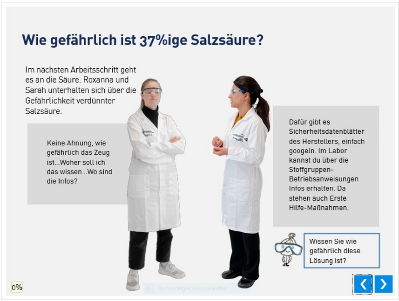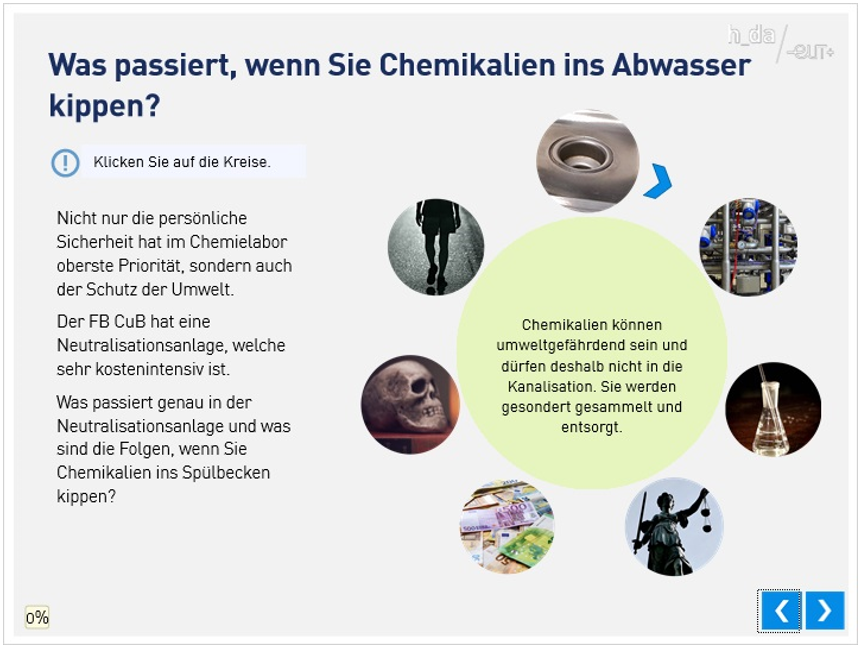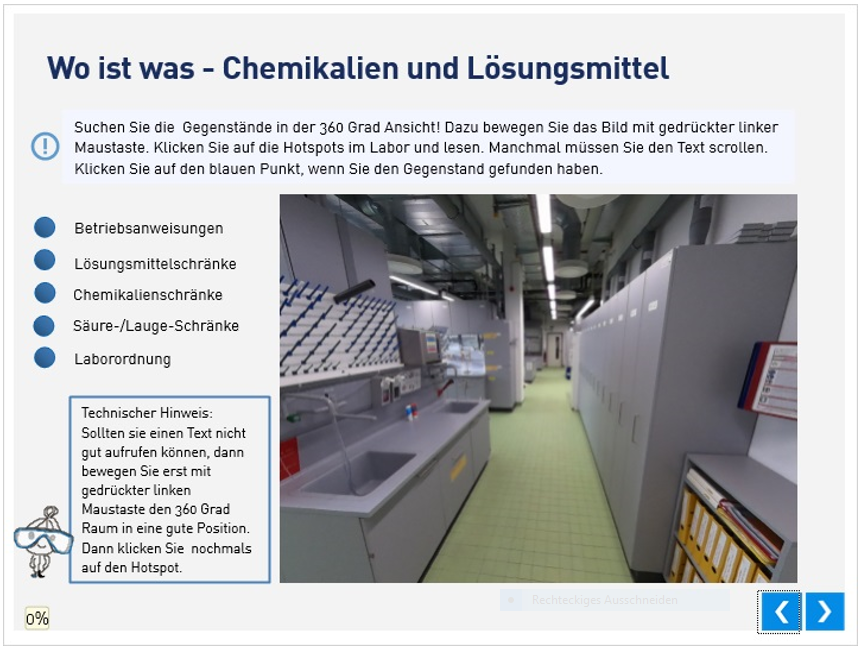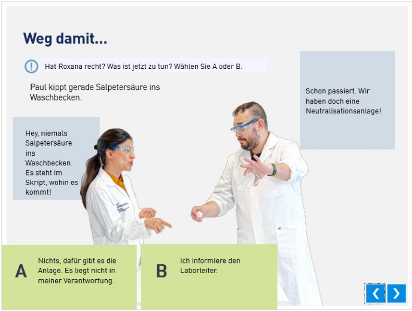Learn anywhere with joy: Web-based training
Scientific learning content can be entertaining and still be serious. Web-based training courses (WBT) are interactive and multimedia online training courses that are designed to be fun to learn. The big advantage: learners can complete the learning modules on their own PC, regardless of time and place. They are also available for any size of learning group.
To keep learners engaged, WBTs rely on edutainment and actively involve learners.
Students solve various types of tasks, are challenged to think and actively click their way through the training. Game elements motivate learners (gamification). They can determine the pace and their own learning path themselves (differentiation). They receive direct feedback. The medium can be played in different languages.
A good graphic and uniform presentation and interesting storytelling also have a motivating effect. With a WBT, you can convey content clearly and offer variety through media diversity. The learning modules are implemented with authoring tools such as Rise, Articulate Storyline or the LernBar. Templates, i.e. page templates, make implementation easier. This medium is most effective when used as blended learning in combination with a face-to-face event.
The didactic design
Good WBTs are didactically planned (rough and detailed concept). A course consists of learning modules and the individual pages are organized according to learning objectives. The important question is: "How can I best implement learning objective XY (motivating, understandable, clear, methodical, media-based)? Ideally, WBTs use storytelling, surprises, jokes or puzzles to make learning fun.
Stories convince learners of the importance of the learning material. Storytelling means that (short!) stories are used to convey the content. In the example below, it is a frame story that leads to situations that are to be mastered in the lab. The cognitive psychologist Daniel Kahnemann pointed out in 2011 that we think and learn in "stories" and can be persuaded by good stories.
WBTs also use didactic principles such as target group orientation, a common thread, clear structuring, exemplification, repetition, curiosity, controversy, comparison and direct feedback. However, the medium still has a few special features that need to be taken into account.
Visual design
- The WBT uses text sparingly on one page. It is not a book.
- Images are more effective than text and are intended to emphasize the learning content.
- Colors are used sparingly and are functional.
- Important control elements should be emphasized and appear in the same place (see examples above).
- In WBT, elements such as images or elements are used as structural aids so that not too much information appears on one page (otherwise there is a risk of "cognitive overload"). The third image above illustrates the principle: when you click on a round image on the page, a corresponding text appears in the green field (in the original WBT). The page remains clear.
- The page layout of the text/image elements generally corresponds to the principle: division into full graphics/ 50:50/ three columns (3/3) or four columns (4/4). Pure text should be avoided. Include images wherever possible.
- It is fundamentally important to keep the language simple. No nested sentences, please. And avoid a nominal style. Learners absorb short sentences better when reading on a screen. A page on the screen is therefore received differently than a book.
- And no more than eight bullet points on one page :-)






